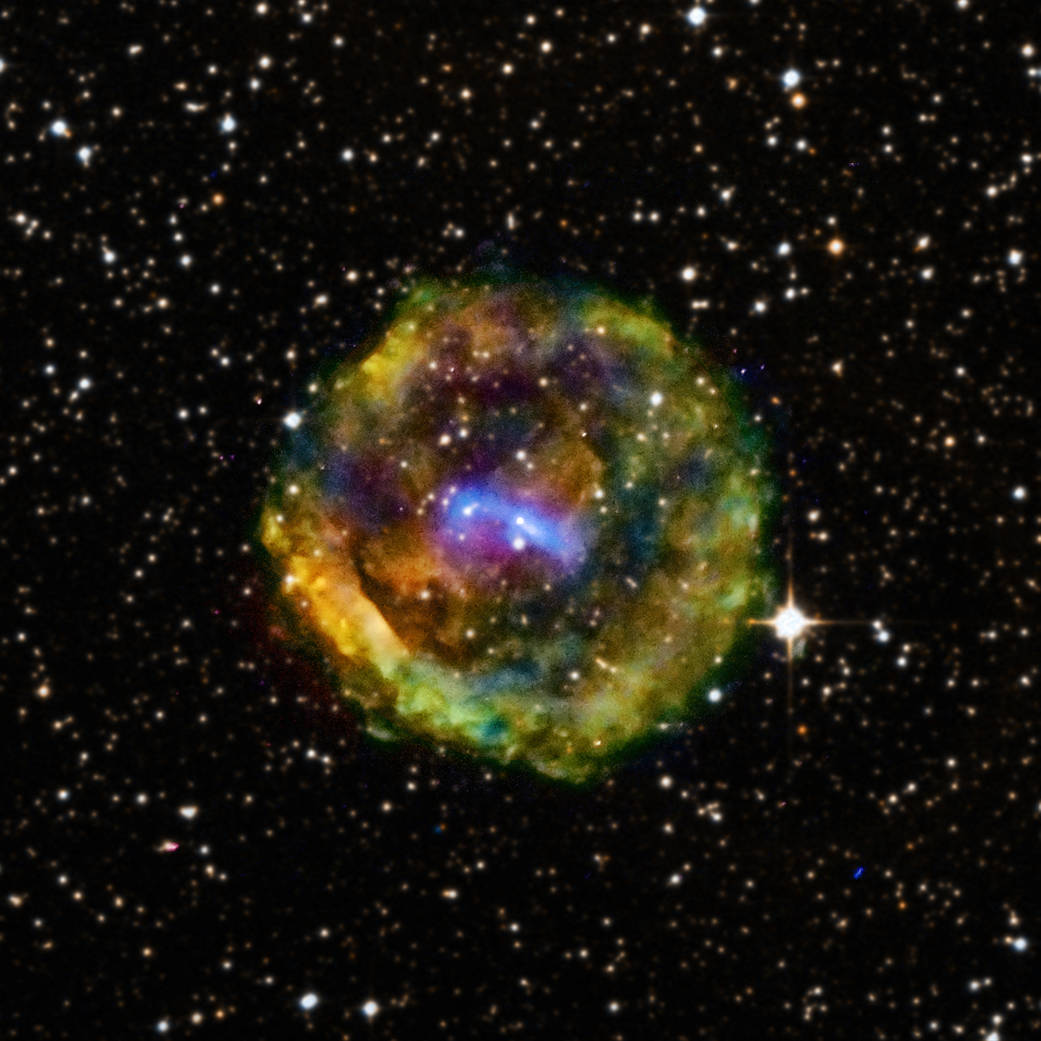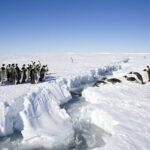Supernova: Exploding Stars and Life on Earth
Can exploding stars dozens of light years away affect life on earth? Learn how a supernova can affect the earth, from organisms ozone.
By Brian C. Thomas
A massive star that exploded near Earth about 2.5 million years ago—a supernova—may have helped drive the megalodon to extinction and may even have affected human evolution. Research by an international team of scientists and I have produced the most detailed picture ever of just how such a scenario played out. We’ve combined observations from astrophysics and geochemistry with new computer simulations to explore all the possible effects that life on Earth may have experienced. We’ve found that ozone in the atmosphere could have been destroyed, ultraviolet light from the Sun could have harmed life on the surface, and high-energy cosmic rays could have rained down, increasing the radiation dose for all life on Earth and especially large animals in the oceans. In addition, it may be that those cosmic rays also increased the rate of lightning and wildfires, possibly playing a role in early human evolution.
For a long time before modern astronomy, humans looked up at the night sky and tried to explain what they saw. Once in a while, keen observers were surprised to notice a new star that appeared suddenly and then, over a few months, faded away again. Chinese astronomers made the first record of a “guest star” in the year 185 CE. As time went by and astronomers got better at their craft and built bigger and better telescopes, humanity learned that these “guest stars” were the spectacular fireworks of massive stars at the end of their lives as they exploded outward, releasing huge amounts of energy into space. And it wasn’t long before people started to wonder what would happen if such a huge explosion, now known as a supernova, went off close to Earth.
The Early Supernova Theories
In 1954, Otto Heinrich Schindewolf, a German paleontologist, speculated that at least one of the great mass extinctions seen in the history of life on Earth might have been caused by a nearby exploding star, but it wasn’t until the 1970s that scientists began trying to put together a realistic picture of what might happen on Earth if a supernova went off nearby. (Keep in mind that “nearby” in astronomy is pretty far away to you and me; stars in our galaxy are on average a few light-years apart, and one light-year is about 6 trillion miles.) In 1974, astrophysicist Malvin Ruderman published an article in Science magazine pointing out that the radiation from a supernova about 50 light-years away could destroy much of the ozone in Earth’s atmosphere. Then in 1978, the physicist Garry Hunt built on Ruderman’s work, suggesting that the changes in Earth’s atmosphere after a nearby supernova event might cause global cooling. Both Ruderman and Hunt realized that damaging the Earth’s protective ozone layer, which protects us from harmful ultraviolet light from the Sun, could have major consequences for life.
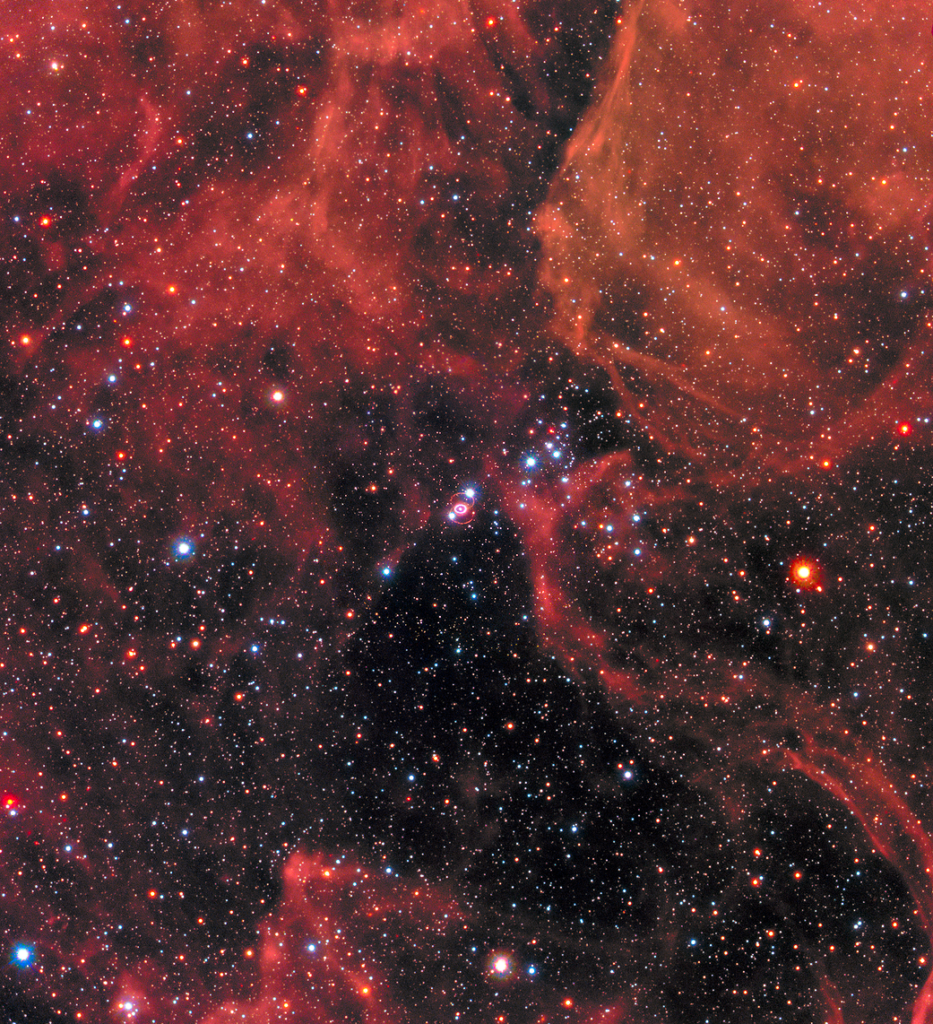

While Ruderman and Hunt made important first steps, many questions remained, and for 25 years no more progress was made. In the early 2000s, astrophysicist Neil Gehrels was leading the team building NASA’s Swift space telescope, which was designed to detect and study a special class of exploding star called gamma-ray bursts. Gehrels was interested in the problem of exploding stars and life on Earth, and he had the resources and connections to gather a team of experts in both astrophysics and atmospheric science. Together, they built the first detailed computer simulation of how Earth’s atmosphere would react to the high-energy radiation from a nearby supernova. In 2003, they published their results in the Astrophysical Journal. Rather than making broad assumptions about the supernova’s characteristics, the Gehrels team used direct observations of Supernova 1987a, one of the best-studied events at the time.
While some scientists thought about how Earth would be affected by a supernova, others considered how we might be able to tell if a supernova had ever actually happened nearby. Astrophysicists figured out decades ago that lighter elements such as carbon and oxygen are created slowly by nuclear fusion inside stars. Heavier elements such as iron, on the other hand, require the massive energy released in a supernova explosion. In 1996, astrophysicists John Ellis, Brian Fields, and David Schramm proposed that we might be able to find here on Earth radioactive elements made in supernova explosions. They thought that one of these elements in particular, an isotope of iron called iron-60, might be especially useful. Radioactive elements decay over time to become other elements. During one half-life, half of a collection of atoms will decay into another type of atom. Iron-60 is only made in supernova explosions and has a half-life of about 2.6 million years. So, if scientists find atoms of iron-60 here on Earth, they know that those atoms must have come from a nearby supernova, within the last few million years.
Looking for Nearby Explosions
Not long after Ellis, Fields, and Schramm proposed this way of detecting a supernova in Earth’s geologically recent history, a team of German scientists reported the first detection of just a few atoms of iron-60 in a drill core from the ocean floor. The atoms came from a section of sediment determined to be about 2.5 million years old. The same team found more iron-60 in 2003, but many scientists regarded their findings as uncertain because of the difficulty in identifying the very small number of atoms against a background of other iron isotopes. In 2016, a flurry of papers reported new detections of iron-60 atoms in more places around the world, directly in space around Earth, and from samples returned from the Moon by the Apollo missions. As before, the iron-60 atoms were found to have arrived on Earth about 2.5 million years ago, with another more tentative detection around 8 million years ago. These measurements were much more robust; using these data and new calculations, Fields and astrophysicist Brian Fry were able to estimate how far away the supernova explosion (or possibly several explosions) would have been: somewhere between 150 and 300 light years away. Astronomers have even been able to determine a few groups of stars that would have been in the right place at the right time to host these supernovae.
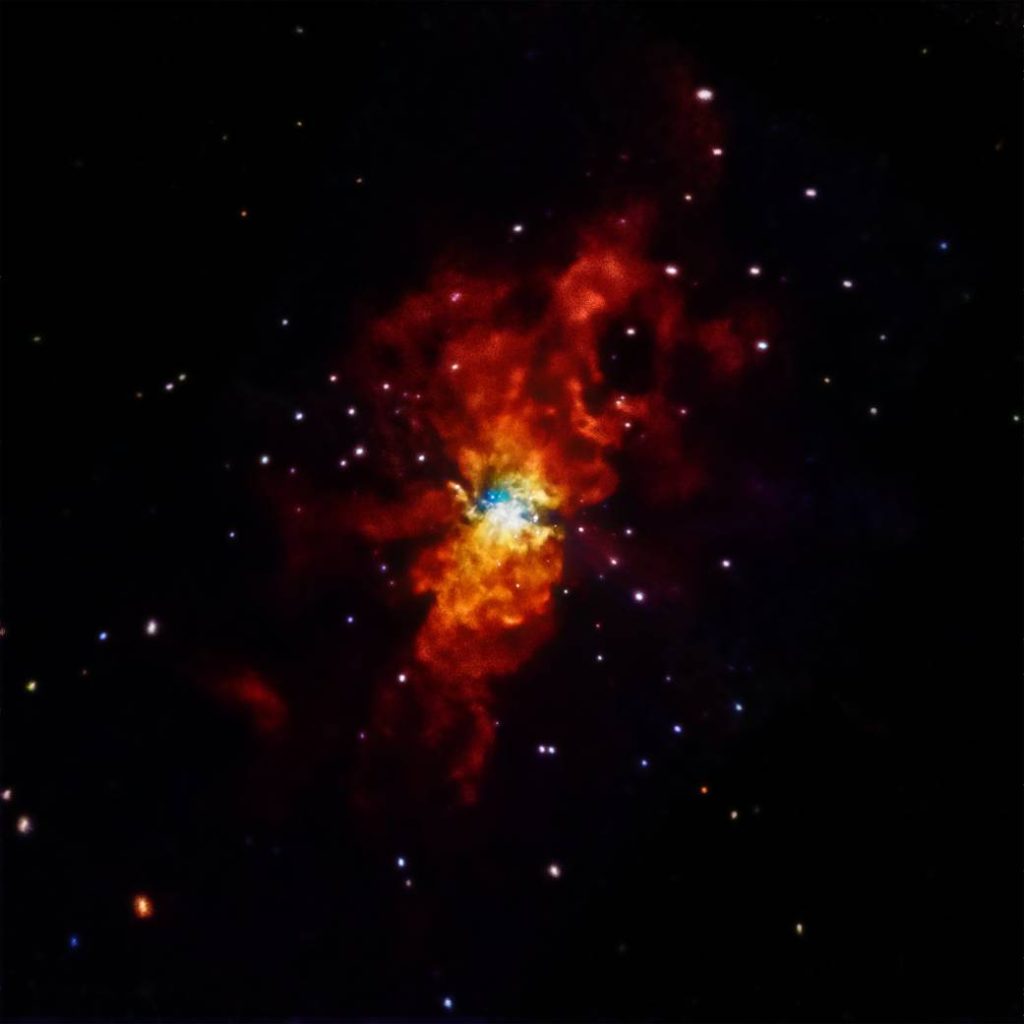

With all the new developments, my collaborators and I knew the time was ripe to revisit the question of just what effects those supernovae would have had on Earth. Along with Adrian Melott at the University of Kansas and Andrew Overholt at MidAmerica Nazarene University, I proposed such a project to the NASA Exobiology program, which was funded. In collaboration with astrophysicists Michael Kachelriess and Dimitri Semikoz, we began to investigate this question in detail. Using the most recent research, Kachelrieß and Semikoz calculated how high-energy particles known as cosmic rays would have moved through space from the supernova to Earth. Meanwhile, my student Emily Engler examined observations of supernovae likely to be similar to those that happened 2.5 million years ago to figure out how much visible, ultraviolet, and X-ray light would have made it to Earth.
RELATED: DID EXPLODING STARS CAUSE THIS MASS EXTINCTION?
Are We Star Stuff?
What we found was both familiar and surprising. First, we examined how the light from the supernova would affect Earth. While most work in the past has examined how high-energy X-rays would affect the atmosphere, we found that there wouldn’t be enough energy in this kind of light from the event 2.5 million years ago. While we didn’t find much effect from X-rays, we did find quite a bit of impact from the cosmic rays generated by the supernova. Using computer simulations of Earth’s atmosphere based on the same simulations used by Gehrels’s team, we found that ozone would be destroyed, though not as badly as in previous work, since we were looking farther away. Still, using other computer simulations, I calculated in detail how ultraviolet light from the Sun would pass through the damaged ozone layer and affect life on Earth’s surface and in the ocean. I found that most organisms wouldn’t see much effect, but some plants and ocean-dwelling plankton might have been harmed.
We wanted to look beyond the usual ozone depletion effects. We know from present-day observations that when cosmic rays enter the atmosphere, they hit atoms such as oxygen and nitrogen, making a “shower” of particles such as neutrons and a particle called a muon. It turns out that these particles, especially the muons, are fairly damaging to organisms, especially larger ones. Overholt used simulations of how these showers were generated, along with our cosmic ray results, and found a large increase in those muons reaching the ground and even deep into the ocean. What’s even more interesting is that this increase would have lasted for thousands of years—which is significant when thinking about how life would have been affected.
Around the same time as life on Earth was exposed to this increased radiation dose, there were some extinctions, including that of the megalodon shark, made famous by the recent movie The Meg. It’s possible that the increase in muon radiation may have contributed to extinctions, though there is a lot of uncertainty as to just how bad that radiation may have been for the megalodon and other animals alive at the time.
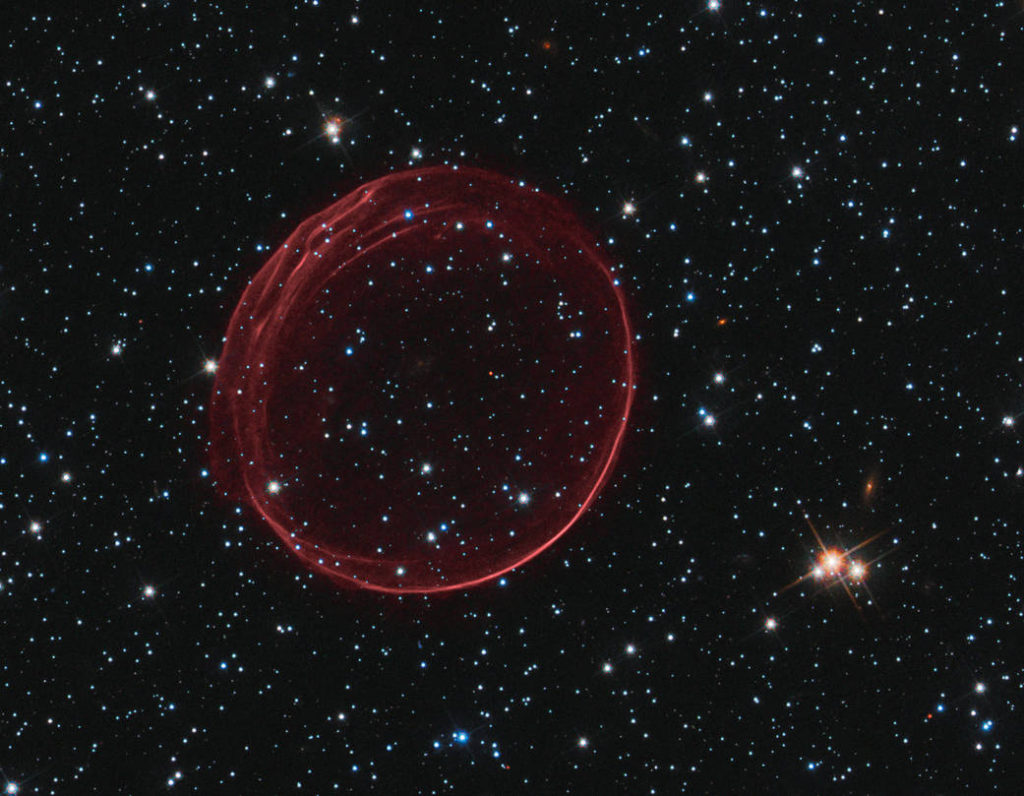

As we continued to think about this topic, another idea came up: our cosmic ray results show a big increase in ionization of the lower atmosphere. Ionization means that electrons have been broken off of atoms and are free to move around on their own. Free electrons in the lower atmosphere contribute to forming lightning, and so we think it’s possible that there was more lightning while the cosmic rays from the supernova were causing this increased ionization. Interestingly, there’s evidence of more fires around the same time as the supernova. Those fires may have been important in early human evolution, since they probably contributed to a change in the environment in East Africa from forests to grasslands. Many scientists have suggested that this environmental change led to the evolution of more modern human ancestors who had to walk upright to survive in the new treeless area. Is it possible that a supernova explosion affected how we modern humans came to be? Maybe, but there’s still work to be done on that question.
RELATED: COMET LOVEJOY DELIVERS FREE ALCOHOL
It may seem strange to think that an exploding star more than 100 light-years from Earth could have affected life here, but we know it happened. We’ve done a lot of work to understand the details, but of course many questions remain open. And that’s what makes working in science so much fun: there’s always more to explore!
This study was published in the journals Astrophysical Journal and Astrobiology.
References
Breitschwerdt, D., Feige, J., Schulreich, M. M., de Avillez, M. A., Dettbarn, C., & Fuchs, B. (2016). The locations of recent supernovae near the Sun from modelling 60Fe transport. Nature, 532, 73-76. http://doi.org/10.1038/nature17424
Ellis, J., Fields, B. D., & Schramm, D. N. (1996). Geological isotope anomalies as signatures of nearby supernovae. Astrophysical Journal, 470, 1227-1236.
Fry, B. J., Fields, B. D., & Ellis, J. R. (2015). Astrophysical shrapnel: Discriminating among near-Earth stellar explosion sources of live radioactive isotopes. Astrophysical Journal, 800, 71. http://doi.org/10.1088/0004-637X/800/1/71
Fry, B. J., Fields, B. D., & Ellis, J. R. (2016). Radioactive iron rain: Transporting 60Fe in supernova dust to the ocean floor. Astrophysical Journal, 827, 48. http://doi.org/10.3847/0004-637X/827/1/48
Gehrels, N. et al. (2003). Ozone depletion from nearby supernovae. Astrophysical Journal, 585, 1169. http://doi.org/10.1086/346127
Hunt, G. E. (1978). Possible climatic and biological impact of nearby supernovae. Nature, 271, 430-431.
Ludwig, P. et al. (2016). Time-resolved 2-million-year-old supernova activity discovered in Earth’s microfossil record. PNAS, 113, 9232-9237. https://doi.org/10.1073/pnas.1601040113
Melott, A. L. et al. (2017). A supernova at 50 pc: Effects on the Earth’s atmosphere and biota. Astrophysical Journal, 840, 105. https://doi.org/10.3847/1538-4357/aa6c57
Melott, A. L. & Thomas, B. C. (2018). Terrestrial effects of moderately nearby supernovae. Lethaia, 51, 325. http://doi.org/10.1111/let.12256
Melott, A. L., Marinho, F., & Paulucci, L. (2019). Hypothesis: Muon radiation dose and marine megafaunal extinction at the End-Pliocene supernova. Astrobiology, 19. http://doi.org/10.1089/ast.2018.1902
Ruderman, M. A. (1974). Possible consequences of nearby supernova explosions for atmospheric ozone and terrestrial life. Science, 184, 1079-1081.
Schindewolf, O. H. (1954). Ober die Faunenwende vom Paldozoikum zurn Mesozoikum. Z deutsch geol Ges, 105, 182.
Thomas, B. C. et al. (2016). Terrestrial effects of nearby supernovae in the early Pleistocene. Astrophysical Journal Letters, 826, L3. http://doi.org/10.3847/2041-8205/826/1/L3
Thomas, B. C. (2018). Photobiological effects at Earth’s surface following a 50 pc supernova. Astrobiology, 18, 481-490. http://doi.org/10.1089/ast.2017.1730
Wallner, A. et al. (2016). Recent near-Earth supernovae probed by global deposition of interstellar radioactive 60Fe. Nature, 532, 69-72. http://doi.org/10.1038/nature17196
About the Author
Brian C. Thomas earned a BS in physics from the University of the Pacific in 1999 and a PhD in physics from the University of Kansas in 2005. Brian is a professor in the Department of Physics and Astronomy at Washburn University, where he teaches introductory astronomy and upper-level physics courses. His research focuses on how high-energy radiation from space affects Earth’s atmosphere and biosphere. He leads a multidisciplinary team working on projects to better understand how life on Earth may be affected by astrophysical events such as solar flares and explosions of massive stars in our galaxy. Find Brian on Twitter @DrBrianAstroBio.
Featured image: Supernova remnant G11.2-0.3 as seen from the Chandra X-ray Observatory, via Borkowski et al; Optical: DSS. Image courtesy of NASA.

